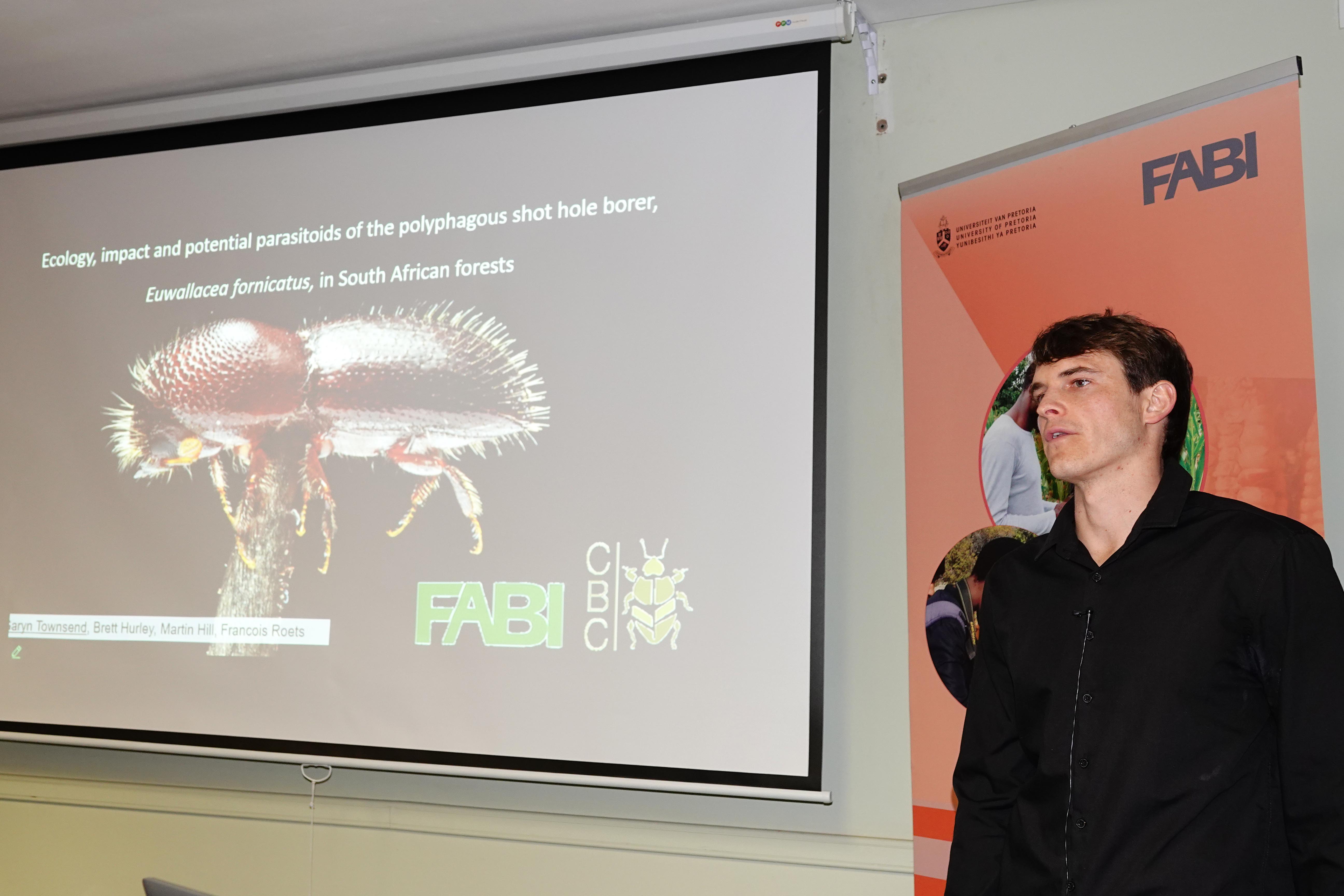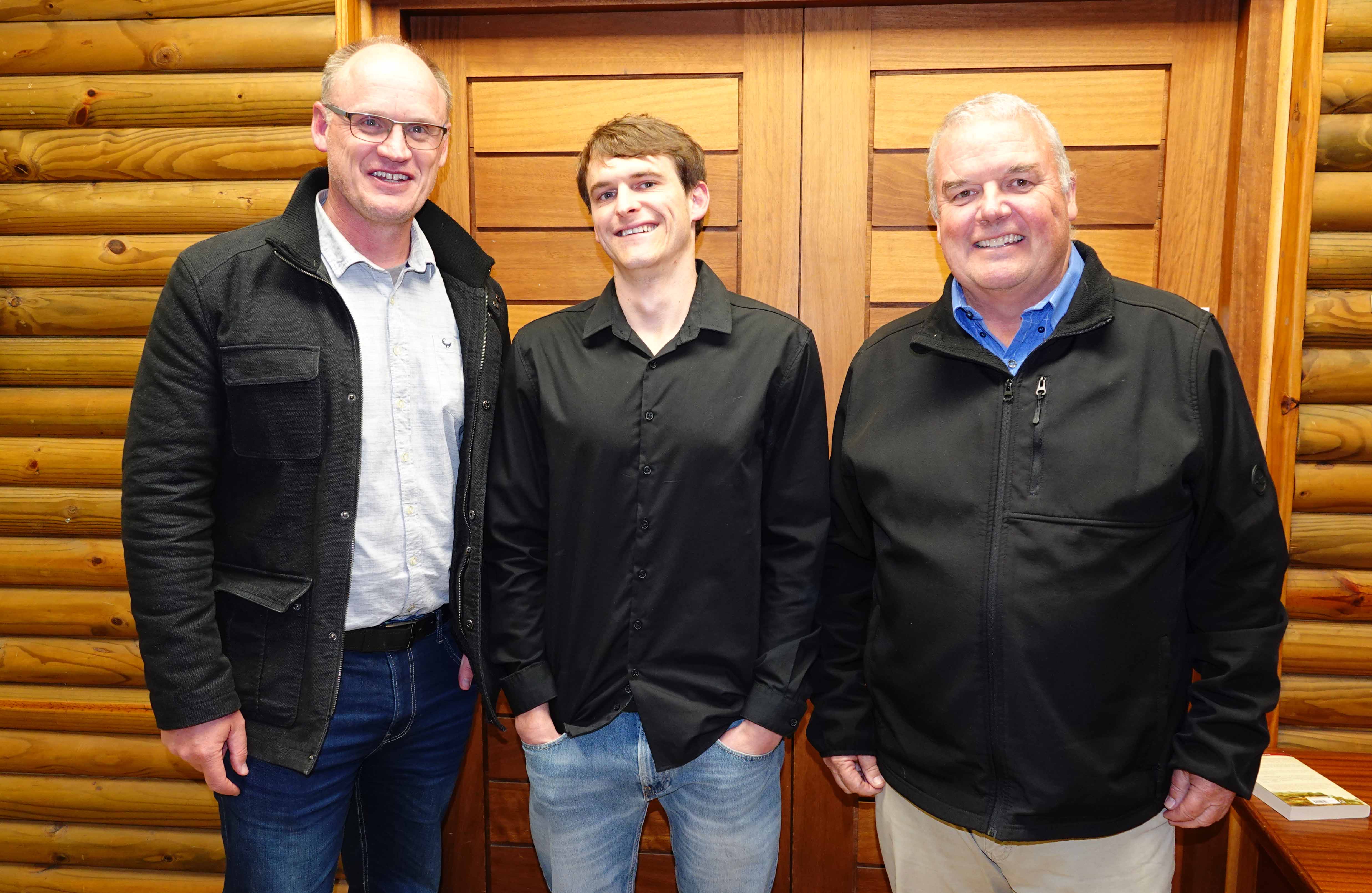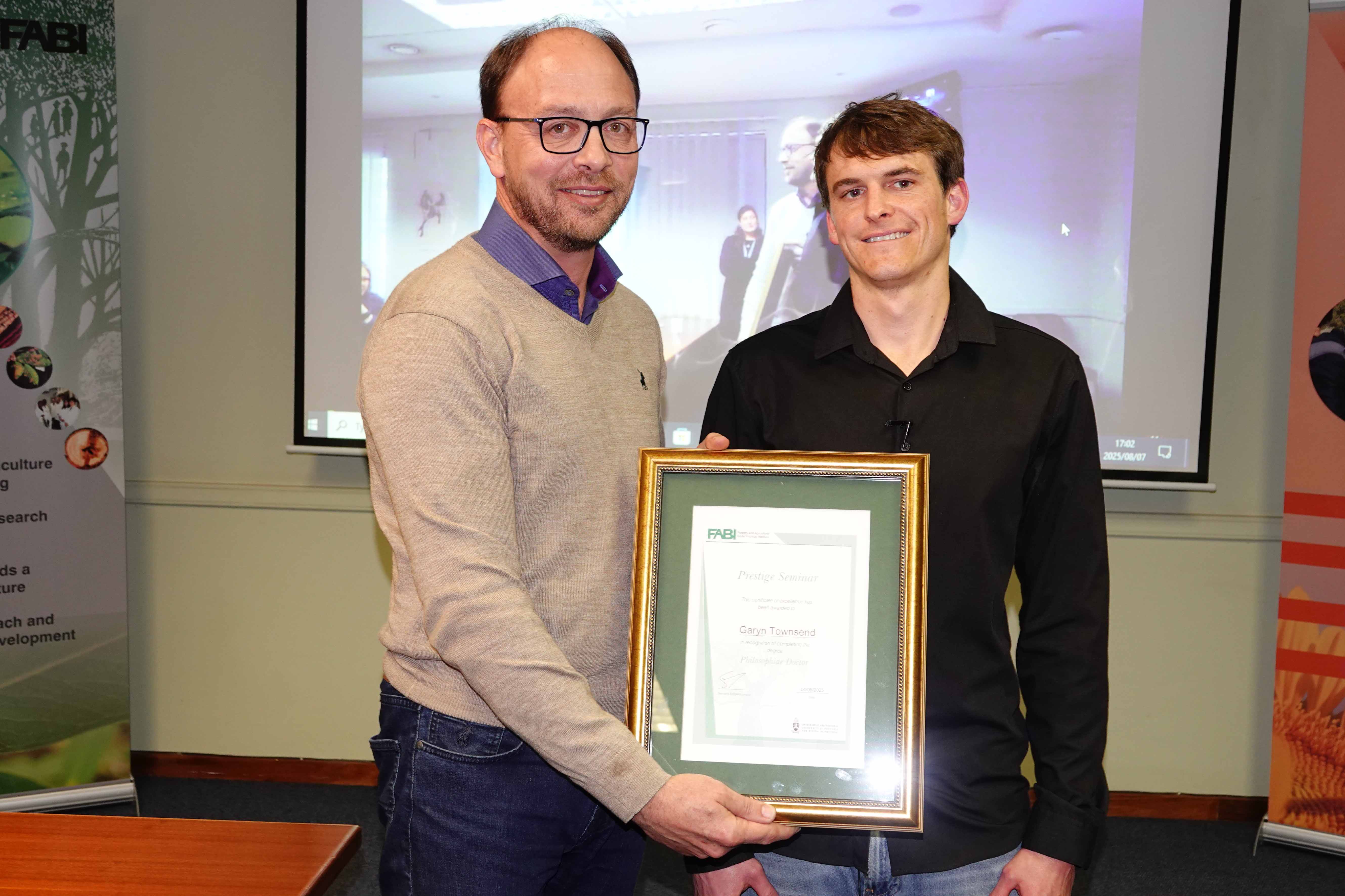Garyn’s PhD sheds light on the impact of PSHB on native forests 2025-08-14
Congratulations to Garyn Townsend on successfully completing his PhD “Ecology, impact and potential parasitoids of the Polyphagous Shot Hole Borer, Euwallacea fornicatus, in South African forests”. Garyn presented his Prestige seminar on 7 August bringing a close his PhD journey.
His supervisors for his PhD were Prof. Brett Hurley, Prof. Martin Hill of the Centre Biological Control (CBC) at Rhodes University and Prof. Francois Roets of Stellenbosch University. The external examiners for his thesis were Prof. Juan Corley (Centro Científico Tecnológico - Patagonia Norte, Argentina) and Prof. Zvi Mendel (Volcani Centre, Israel) and the internal examiner was Prof. Mark Robertson from the Department of Zoology and Entomology at UP.
Prof. Hurley praised Garyn for doing excellent work completing a challenging study and persevering through many long field trips. His PhD investigated factors that drive infestations of the PSHB in South Africa's native forests. He also examined the native ambrosia beetle community, and their natural enemies - to investigate potential biological control options for PSHB.
The PSHB is an invasive ambrosia beetle native to Southeast Asia and is associated with a pathogenic symbiotic fungus Fusarium euwallaceae. The PSHB invasion in South Africa is the largest geographical outbreak of this beetle in the world is arguably one of the most important pests introduced in South Africa. It is affecting trees in all sectors: the agricultural and commercial forestry sector, urban trees, as well as native trees in natural forests. Since its discovery in 2017, 161 tree species have been found infested in South Africa; these include 83 reproductive hosts and 78 non-reproductive hosts.
Garyn’s study found that higher tree species richness in plots resulted in lower PSHB attacks, whereas higher densities of competent host species led to increased infestations. Increased frequency of occurrence of PSHB in native forest plots correlated with an increased richness of other scolytine beetle species, and PSHB attacks on trees may potentially create opportunities for secondary beetle attacks.
His work also revealed the presence of another potentially invasive scolytine beetle (Amasa truncata) that was recorded for the first time in southern Africa, highlighting the need for more stringent biosecurity.
Collections of parasitoids from PSHB-infested wood suggest an absence of co-evolved parasitoids of PSHB in South Africa but showed potential associations between the beetle and a minimum of seven parasitoid wasp species.
Overall, this study provided data that are critical for informing future monitoring, impact forecasting, and the development of sustainable management strategies against the PSHB and other possible invasive scolytine beetle species.




